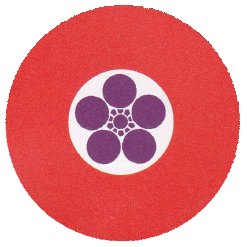|
What is Japanese Jiu Jitsu?
| Jiu Jitsu began as a battlefield martial art, developed by the Samurai to deal with armed opponents when they had lost their weapons. Over the generations, it has been developed by many different people into many different things. "JuJutsu," "Jiu Jitsu," "Ju Jitsu," "Yawara," "Wajutsu," and "Taijutsu"are all variations on the translation of one thing; yielding art. The one thing that many of the styles of Jiu Jitsu have in common is that they involve movement, locking or throwing to achieve positive result. My intention today is to tell you a little about the two popular forms of Jiu Jitsu, being Brazilian and Japanese. |
Japanese Jiu Jitsu
| Japanese Jiu Jitsu is more in line with
the original form of the art. A defender will block or evade an attack
and then use that momentum to perform a technique, which could be
any number of things. Many Dojos around the world will use this martial
art as a way to practice self-defense from realistic situations involving
multiple attackers or weapons, as what was effective hundreds of years
ago, can be adapted for use today. As an example of a technique that might be used, a defender will deflect a punch to the fast and redirect it downwards. They will then turn their body away while holding to pull the attacker forward before turning back toward their assailant and twisting their wrist inwards, inflicting pain and diffusing the attack. This technique is called "Kote Gaeshi" or quite simply, "Wrist Twist." Another example would be "Ippon Seoi Nage" in which an attacker's momentum is carried over the top of the defender and plunged toward the ground. Expect to find your training in Japanese Jiu Jitsu to reflect what you might expect from a very old martial arts dojo. Etiquette is likely to be stressed and Japanese commands will be used quite often. Although there may be shouting, the environment should be encouraging and fun. It's a fantastic way to learn self-defense. For more information, please visit another article; History of Japanese Jiu Jitsu. |
Brazilian Jiu Jitsu
| There is a saying that 90% of fights end up on the ground. Knowing how to defend yourself while on the ground should then become paramount in your defensive training. This is where Brazilian Jiu Jitsu has developed from; the ground game. In the last few years, this particular style has become incredibly popular, due to fun training environments and competitions appealing to all. Brazilian Jiu Jitsu (or BJJ) uses movement and body position while on the ground to subdue opponents with hold downs or locking techniques, designed to generate a win through tap-out. BJJ is very deep, involving countless counters, techniques, ideas and movements. It is a constantly evolving art, as players begin to become knowledgeable of regular techniques and learn to counter them. BJJ Dojos can vary in type. You may be required to wear a Gi to train in or you may not. The environment could be traditional and use etiquette or everything may be very laid back and relaxed. As with all martial arts though, you will get out of your training what you put it. Concentration on the ground game can be incredibly rewarding and fun. |
So what's the Difference?
| The difference is really that BJJ focuses on the ground while JJJ focuses on stood up techniques and self-defense. There are rarely competitions in traditional Dojos, but in BJJ, they are likely to be commonplace. In terms of which will be more fun or more effective; again it depends on what you put into it. Any martial art can be useful or useless, depending on how you train and how you listen, to the instruction. Whatever it is you choose to train in? pay attention and train hard. The rewards will be intrinsic. |


